Species
Discover the species we research:
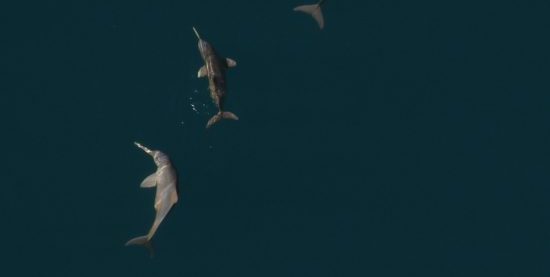

Toninha
Scientific Name: Pontoporia blainvillei
Common names: Franciscana
International status: Vulnerable (IUCN classification)
Status in Brazil: Critically Endangered (MMA classification)
Distribution: Endemic to the south-western Atlantic, in the coastal waters of Brazil, Uruguay and Argentina.
Habitat: Inhabits coastal waters, generally between 0 and 25 m deep in ES to northern SC, but reaching up to 50 m in southern Brazil, Uruguay and Argentina.
Threats: Incidental catches in fishing nets and general environmental degradation.
Length: Females are larger than males, with maximum sizes of 1.74m and 1.58m, respectively. However, the Franciscanas that inhabit the waters north of Florianópolis are about 20% smaller than those in the south.
Weight: Adults range from 35to 55 kg, depending on geographic area.
Group size: 1-6, which can form aggregations of up to 50 individuals.
Diet: It feeds on a wide variety of juvenile fish (~5cm) of different species, and cephalopods. Shrimp are important in the first months of life.
Reproduction: Males and females mature between 3 and 5 years of age. Only 1 calf is born every 1 or 2 years.
Curiosities: Very “shy” species, rarely approaching motor boats. There are two isolated populations at high risk of extinction: one in Espírito Santo and one in the north of Rio de Janeiro.
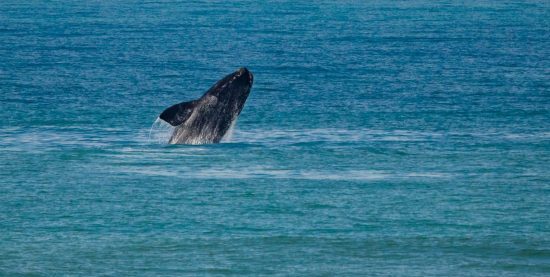

Baleia-franca-austral
Binomial name: Eubalaena australis.
Common name: Baleia-franca-austral.
International status: Least concern (LC) (Red List/IUCN - 2021).
Status in Brazil: In Danger (ID) (Red Book of Brazilian Fauna Threatened with Extinction - 2018).
Distribution: It is distributed in the oceans of the southern hemisphere, and its main reproductive areas are southern Brazil, Peninsula of Valdés, South Africa and Australia.
Habitat: Southern right whales spend the southern summer at the poles where they feed and migrate annually in the southern winter period to tropical waters for mating and giving birth. In these places, it inhabits coastal areas. In general, females with calves are seen near the surf zone, at depths of less than 20 m. Competitive groups remain further away from the wave region, at greater depths (60 m).
Threats: Collision with large vessels, incidental catches in fishing nets and general environmental degradation.
Length: The specie can measure between 15 and 18 meters in length when they become adults and the females are larger than males.
Weight: Adult females can weigh up to 60 tons or more, while adult males rarely weigh more than 45 tons.
Group size: Southern right whales are mostly solitary individuals. The most commonly sighted groups are pairs composed of mother and calf, formations of breeding groups with females and males can be observed during the breeding season, with up to 12 individuals.
Diet: The feeding strategy of the southern right whales consists of “filtering” the water where the food is located through their mouth bristles. This food consists of small copepods (a group of crustaceans that are part of the aquatic invertebrate fauna), zooplankton and mainly Krill (Euphausia superba and Munida gregaria).
Reproduction: Males and females mature between 6 and 7 years of age. The females have their first calf, between 8 and 9 years old, and each female can generate only 1 calf every 3 years, on average.
Curiosities: The genus Eubalaena has proven life expectancy around 60 years. It is characteristic for having a “V”-shaped blow, its gestation lasts around 12 months and the puppies are born with an average of 5 meters in length and 4 to 5 tons in weight. Individuals of the species can be identified individually by their calluses on the head, which work like the fingerprint in humans.
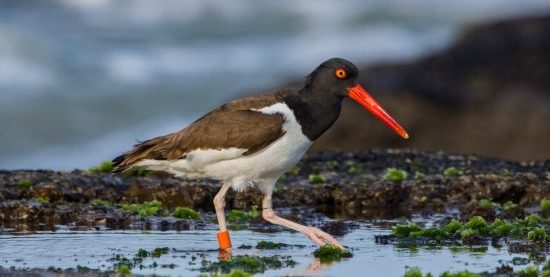

Piru-piru
Scientific Name: Haematopus palliatus Temminck, 1820
Common name: American Oystercatcher, Piru-piru (in Portuguese)
Internacional status: Least Concern (LC) (IUCN)
Brazilian status: Near Threatened (NT) (MMA, Brazilian Red List)
Distribution: Across the Americas
Habitat: Coastal regions, commonly found on sandy beaches, and occasionally on rocky shores. At the Rio Grande do Sul, southern Brazil, it is commonly found along the coast, including important protected areas, such as the Wildlife Refuge Ilha dos Lobos and the parks of Itapeva and Lagoa do Peixe.
Main Threats: Destruction of coastal dunes, vehicles on the beach and unleashed dogs on the beaches and coastal dunes.
Size: 40 to 44 cm. The wingspan reaches about 80 cm.
Weight: 400-700 g. Females larger than males.
Diet: It feeds mainly on marine invertebrates, including several bivalve species (e.g. Amarilladesma mactroides, Donax hanleyanus, Perna Perna). The parents feed the chicks during their first month of life.
Reproduction: They are territorial and build nest in coastal dunes, especially in the spring. The nests usually contain two eggs and the incubation period is about 24-28 days.
Lifespan: 17 years.
Curiosities: Monogamous. Some individuals remain with their partner throughout their lives. Both parents are involved in nest building and defense, incubation and brooding.
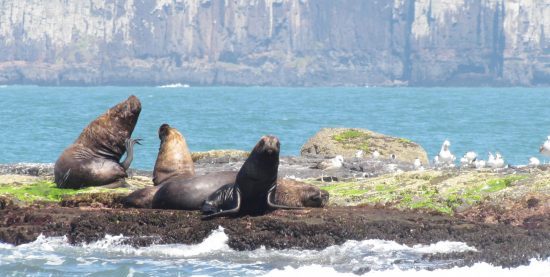

Leão-marinho-sul-americano
Scientific name: Otaria flavescens
Common name: South American sea lions
International status: Least Concern (IUCN)
Brazilian status: Not evaluated in last review (Portaria Nº 444/2014)
Rio Grande do Sul status: Near Threatened (Decreto Estadual Nº 51.797/2014)
Distribution: The South American Sea Lion is distributed from southern Brazil to Cape Horn in the southern tip of South America in the Atlantic Ocean, and from Cape Horn to Salinas in southern Ecuador, in the Pacific Ocean. The breeding colonies of the species are located on beaches and coastal islands in Uruguay, south-central Argentina, Malvinas/Falkland Islands, Chile and Peru. In Brazil there are no breeding colonies of the South American sea lion, however individuals of the species are found every year in the region, with Refúgio da Vida Silvestre da Ilha dos Lobos in Torres and adjacent waters the northern limit of its distribution. The presence of the species in Brazil occurs mainly in the winter and spring months, when males move from their reproductive areas in the Atlantic Ocean, mainly from the Uruguayan coast, to Brazilian waters.
Habitat: The South American sea lion is a species that occupies coastal waters, however it can also use environments further away from the coast during its feeding trips.
Size and weight: Adult males can reach up to 2.70 m and weigh 350 kg. Females are much smaller than males, reaching 2.20 m and 150 kg. The pups are born with about 85 cm and weigh between 10 and 15 kg.
External characteristics: The South American sea lion has a color ranging from brown, reddish brown to yellowish, especially in adult females. They have a large, flat snout, more prominent in sub-adult and adult males. Adult males have a prominent mane on the head, neck and chest.
Diet: The South American sea lion diet is based mainly on fish, but also predates cephalopods and crustaceans. In Brazil, the species feeds mainly on bone fish. The prey described as the most important in their diet in southern Brazil, were fish, Banded croaker (Paralanchurus brasiliensis), Southern king weakfish (Macrodon atricauda), Whitemouth croaker (Micropogonias furnieri), Stripped weakfish (Cynoscion guatucupa), Argentine croaker (Umbrina canosai), Brazilian codling (Urophycis brasiliensis), Largehead hairtail (Trichiurus lepturus) and Bluefish (Pomatomus saltatrix).
Curiosities: Sea lions have a habit of following fishing boats and feeding on fish in nets. This behavior generates a great conflict between the species and the fishing sector throughout its distribution, where fishermen claim that these interactions generate reductions in catches and significant economic losses.
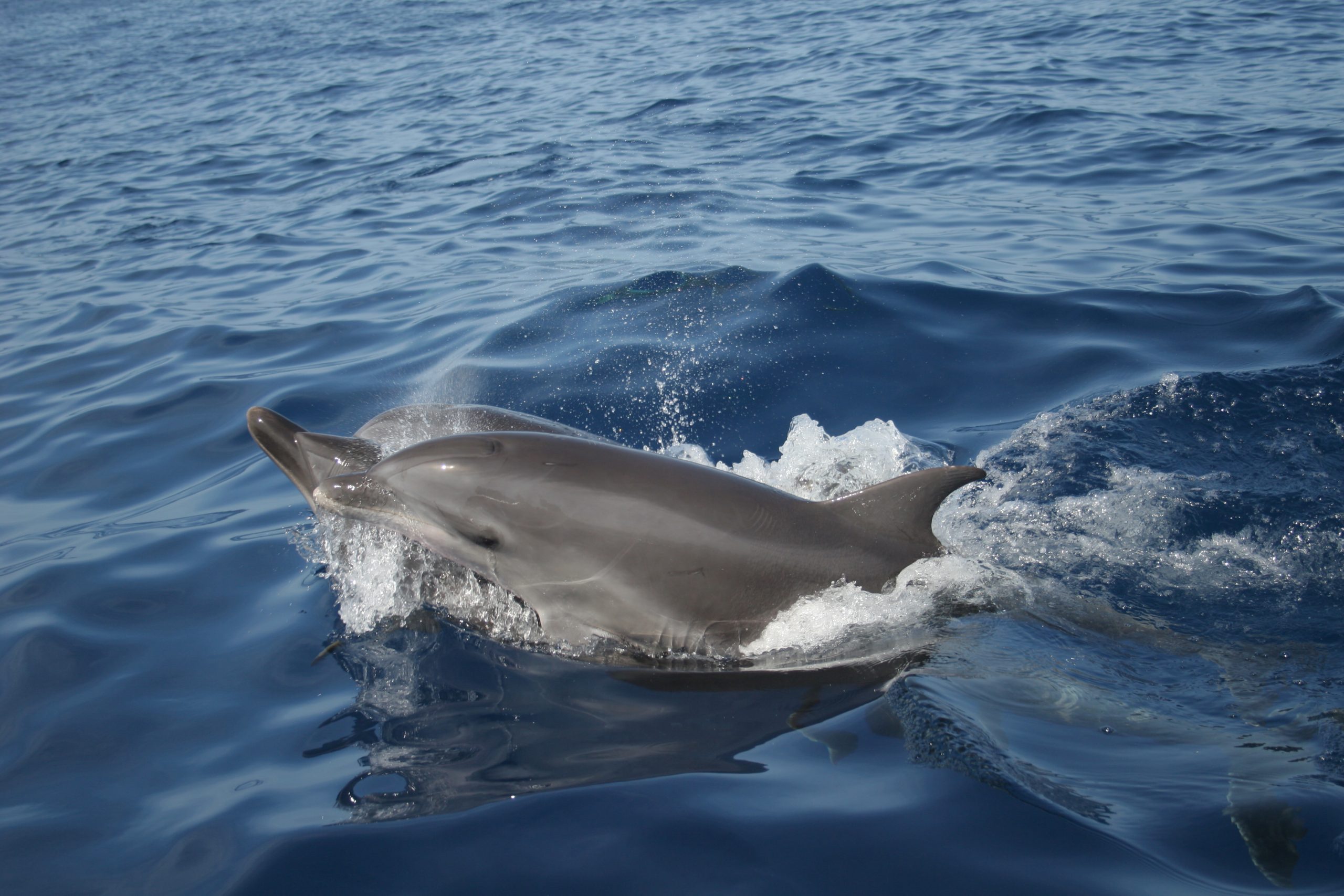

golfinho-nariz-de-garrafa
Genus: Tursiops
Common names in Brazil: bottlenose dolphin.
Distribution: the genus is considered cosmopolitan, occurring in tropical and temperate zones of all oceans. In the Southwestern Atlantic Ocean it is distributed from the coast of Amapá, in Brazil to the Province of Chubut, in Argentina, with some records in Tierra del Fuego, in the extreme south of the American continent.
Habitat: Adapted to different habitats, it occupies ocean and coastal regions and also estuaries. In southern Brazil, it often enters estuaries such as Barra do Rio Tramandaí and Lagoa dos Patos. It is also found around oceanic islands such as the São Pedro and São Paulo Archipelago and the Atol das Rocas.
Size: Up to 3.85m when adults.
Weight: They can reach up to 350kg of mass when adults. External characteristics: it has a robust and hydrodynamic body, which allows them to slide quickly through the water. It has a short, broad and clearly distinct face of the head. The color varies from light gray to dark gray, almost black, with the belly part being generally lighter than the back.
Diet: feeds mainly on fish and less frequently on cephalopods. In Rio Grande do Sul, the main prey are swordfish (Trichiurus lepturus), maria-luiza (Paralonchurus brasiliensis), corvina (Micropogonias furnieri) and mullet (Mugil liza).
Curiosities: Worldwide, more than 20 species have been described for the genus Tursiops. For the Southwestern Atlantic Ocean (ASO), Fernando Lahille described the species Tursiops gephyreus, in 1908. However, over the years, this species has fallen into disuse and most scientists have adopted the species T. truncatus for the animals occurring in that area. From the year 2000, new studies have emerged. One of them suggests the existence of two subspecies in the ASO (T. truncatus truncatus and T. truncatus gephyreus) while another demonstrates the existence of the species T. truncatus and also the species described by Lahille, T. gephyreus, occurring in southern Brazil, Uruguay and Argentina.


Lobo-marinho-sul-americano
Scientific name: Arctocephalus australis
Common name: South American fur seals
International status: Least Concern (IUCN)
Brazilian status: Not evaluated in last review (Portaria Nº 444/2014)
Rio Grande do Sul status: Not evaluated in last review (Decreto Estadual Nº 51.797/2014)
Distribution: The South American fur seal is distributed throughout southern America, in the Atlantic and Pacific Oceans. The reproductive colonies of the species are located on beaches and coastal islands in Uruguay, southern-central Argentina, the Malvinas/Falkland Islands, Chile and Peru, with Isla de Lobos in Uruguay the largest breeding colonies of the species. In Brazil there are no breeding colonies of the South American fur seal, however hundreds of individuals of the species, mainly young people under the age of one, are found every year on the beaches of the southern region of Brazil. The presence of the species in Brazil occurs mainly in the winter and spring months, when the animals can be seen even in the southeastern region of the country.
Habitat: The South American fur seal is a species that occupies coastal waters, however it usually feeds in areas furthest from the coast in pelagic environments.
Size and weight: Adult males can reach up to 2 m and weigh 200 kg. Females are much smaller than males, reaching 1.40 m and 60 kg. The pups are born about 60 cm and weigh 4 kg.
External characteristics: The South American fur seal has a dark brown color, with an eventually orange belly. The snout is thinner and elongated than the sea lion, having long vibrissae (whiskers). Like the South American sea lion, the species is highly dimorphic, with males larger than females. Unlike South American sea lions, adult males do not have a prominent mane on the head, neck and chest.
Diet: The South American fur seal diet consists of pelagic fish and cephalopods, but also preys on crustaceans. In Brazil, the species feeds mainly on Largehead hairtail (Trichiurus lepturus), Marini's anchovy (Anchoa marinii) and squid (Doryteuthis sanpaulensis).
Curiosities: The South American fur seal was the main species of wolves and sea lions, commercially married in southern America. The hunt for the commercialization of the skin and genitalia (males), ran from the 16th century to 1991. Currently the species, as well as the other species of marine mammals, is protected throughout its distribution.


Baleia-de-Bryde
Scientific Name: Balaenoptera edeni / brydei
Common Name: Bryde's whale
International status: Least concern (IUCN classification)
Status in Brazil: Data deficient (MMA classification)
Distribution: Occurs worldwide, in tropical and temperate waters.
Habitat: On the east coast of South America, it has records from Venezuela to the south of Brazil, usually in regions with warm waters and subtropical temperatures.
Threats: Extraction of resources, increased boat traffic and environmental pollution.
Length: Females of Bryde’s whale (B. brydei) are larger than males, with maximum sizes of 14.6m and 15.6m, respectively. However, the smaller form of the Bryde's whale (B. edeni) reaches maturity at 9m and reaches only 11.5m.
Weight: Adults weigh around 13,600 to 15,000 kg.
Group size: Although they are solitary in general, they can form groups to feed in coastal waters and up to 30 animals in ocean waters.
Diet: Unlike other whales of its kind that consume krill, it also feeds on fish and cephalopods. In southeastern Brazil, the species was observed feeding on sardines (Sardinella brasiliensis) and mackerels (Scomber japonicus).
Reproduction: There are birth records in different seasons. The gestation period is 11 to 12 months and the breastfeeding time is around 6 months, with the birth of only one puppy at a time.
Trivia: There has been an increase in Bryde's whale stranding in recent decades off the coast of eastern South America. However, the reason for this increase is not clear.
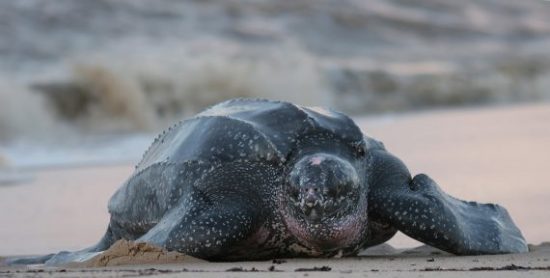

Tartaruga-de-couro
Nome Científico: Dermochelys coriacea
Nomes comuns: Tartaruga-de-couro ou Tartaruga-gigante
Status internacional: Vulnerável (classificação da IUCN)
Status no Brasil: Criticamente em Perigo (classificação do MMA)
Distribuição: Todos os oceanos tropicais e temperados do mundo.
Habitat: Vive usualmente na zona oceânica durante a maior parte da vida. A única área regular de desova conhecida no Brasil situa-se no litoral norte do Espírito Santo.
Tamanho: Até 178cm de comprimento curvilíneo de carapaça.
Peso: Em média 400kg.
Casco (carapaça): Composto por uma camada de pele fina e resistente e milhares de pequenas placas ósseas, formando sete quilhas ao longo do comprimento, daí o nome popular, de couro. Apenas os filhotes apresentam placa
Cabeça: Proporcionalmente pequena, com mandíbulas poderosas em forma de W, com lâminas afiadíssimas para a captura de águas-vivas.
Nadadeiras: As dianteiras podem atingir mais de dois metros.
Dieta: A dieta é composta por zooplâncton gelatinoso, como celenterados, pyrossomos e salpas.
Nº de ninhos no Brasil: Aproximadamente 120 por temporada
Curiosidades: A área conhecida com desovas regulares situa-se no Litoral norte do Espírito Santo, próximo à foz do Rio Doce.
